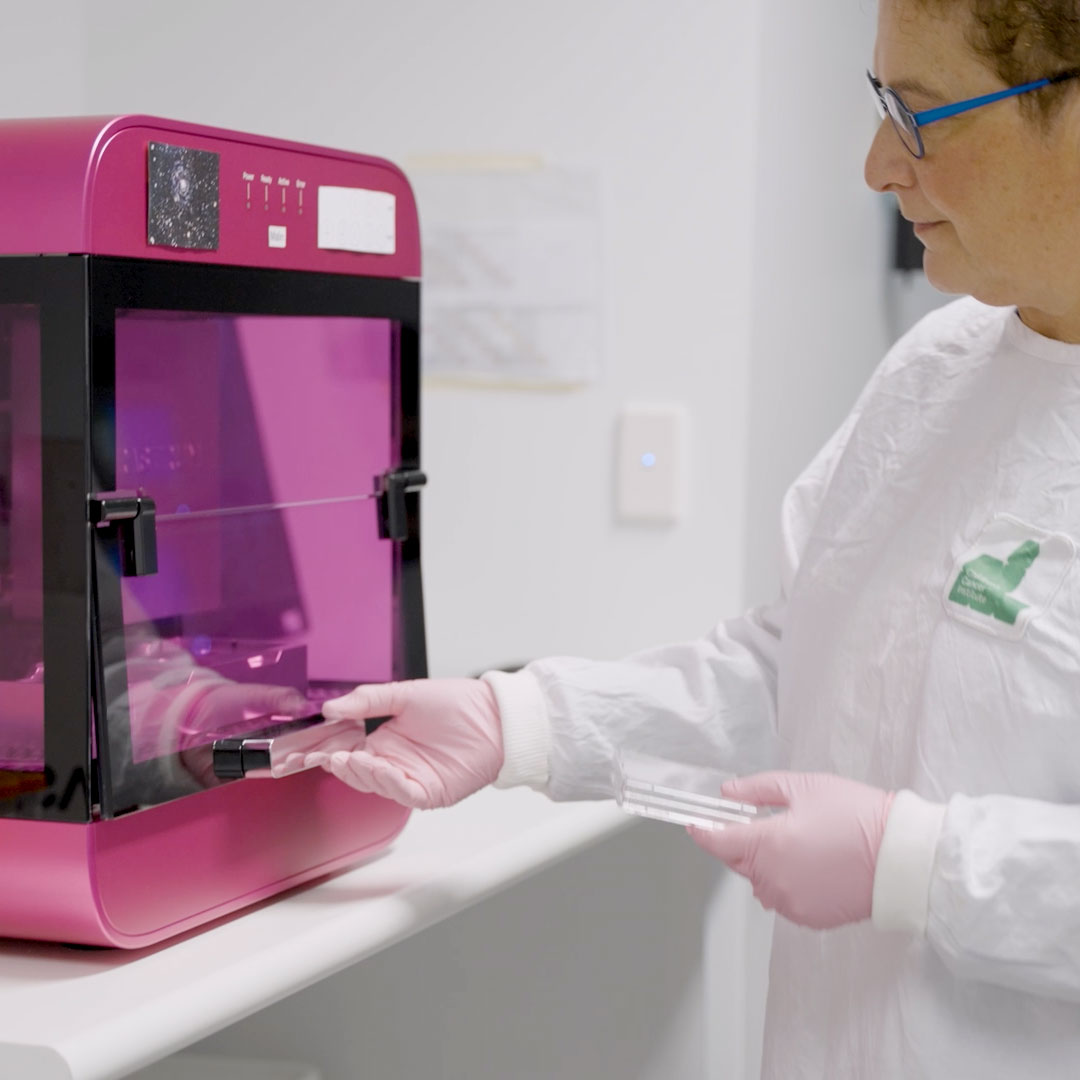In collaboration with colleagues at the ARC Centre of Excellence in Convergent Bio-Nano Science and Technology and the Australian Centre for NanoMedicine, we’ve created a sensor that can detect tiny amounts of genetic material shed by cancer cells into the blood. These findings were published this week in the journal Nature Nanotechnology.
A promising tool for cancer detection
If you follow developments in cancer research, chances are you’ve heard about ‘liquid biopsies’. Unlike the traditional biopsy, which requires collection of tumour tissue for testing, a liquid biopsy only requires collection of a blood sample.
Liquid biopsies can be used to track the growth of cancer cells in a patient over time, and to track the response of cancer cells to treatment. Ultimately, they should be able to detect cancer early, long before symptoms arise.
The device developed by our researchers offers a promising new tool for analysing liquid biopsies. Using gold-coated magnetic nanoparticles, it’s the first sensor that can detect tiny amounts of a type of genetic material called microRNA directly in unprocessed blood samples. Particular microRNAs are associated with cancer and so can be used as bio-markers to detect it.

How does it work?
Think of the nanoparticles as tiny machines. Machines that have been engineered to capture, concentrate and quantitate the target microRNA molecules in a three-step process.
1. Nanoparticles are mixed with a blood sample. Probes attached to the surface of the nanoparticles stick to the target microRNA molecules in the blood.

2. As the nanoparticles are magnetic, a magnet is used to hold onto the nanoparticles in the mixture, while all the other material is washed away.

3. Now the target molecules need to be detected and quantitated, and to do this the nanoparticles are placed on an electrode. Wherever a target molecule is stuck to a probe, it blocks the flow of electrical current. By measuring the decrease in current, scientists can determine how many target molecules are present.

Ten million times more sensitive
Using nanoparticles in this way, as so-called ‘dispersible electrodes’, produces an incredibly sensitive sensor. In fact, it’s ten million times more sensitive than the same detection strategy on a flat surface.
The result is a tool that’s as sensitive as the current standard method for liquid biopsies, but with the advantages of working directly on unprocessed blood samples, being faster and less labour-intensive, and capable of automation in a low-cost device. It could also be adapted to analyse different kinds of biomolecules, thus improving a variety of diagnostic tests.
This work was carried out by scientists in Prof. Justin Gooding’s group in the School of Chemistry UNSW, and researchers Dr Joshua McCarroll and Dr Marion Le Grand in Prof. Maria Kavallaris’s Tumour Biology and Targeting program at Children’s Cancer Institute.
Read the research article.
Top image: gold-coated nanoparticles are concentrated using a magnet















